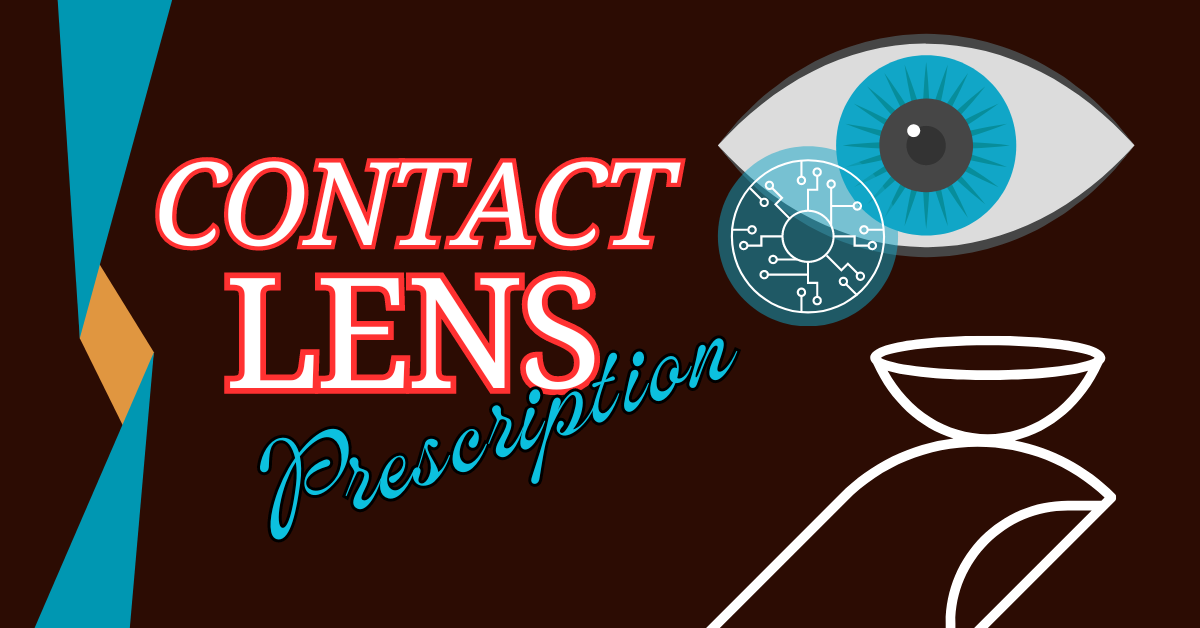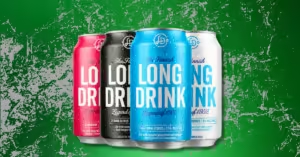If you’re considering switching to contact lenses or are already a user, understanding your contact lens prescription is essential for both comfort and safety. While many people assume that a contact lens prescription is the same as a glasses prescription, this isn’t the case. A contact lens prescription is specifically tailored to the shape and needs of your eyes, ensuring that you get the right fit and vision correction.
Wearing contact lenses without a valid prescription can lead to discomfort, poor vision, and even eye damage. In this article, we’ll dive deep into everything you need to know about getting a contact lens prescription, how to read it, the differences from a glasses prescription, and why keeping it up to date is so important.
How to Get a Contact Lens Prescription
Obtaining a contact lens prescription requires more than just a standard eye exam. Because contact lenses sit directly on the surface of your eye, they need to fit properly to avoid irritation or more serious issues such as corneal damage. Here’s a step-by-step guide on how to get your contact lens prescription:
Step 1: Schedule an Eye Exam
The first step to getting a contact lens prescription is scheduling a comprehensive eye exam with an optometrist or ophthalmologist. During this exam, the doctor will assess your overall eye health, check for conditions like astigmatism, and determine your prescription needs for both distance and near vision.
Step 2: Contact Lens Fitting
After your eye exam, your optometrist will perform a contact lens fitting. This involves measuring the curvature of your cornea, which is the transparent part of your eye that covers the iris and pupil. A proper fit ensures that the lenses sit comfortably on your eyes without causing discomfort or damage.
During this fitting, your doctor may also evaluate the diameter and base curve of the lens, which are essential components of your contact lens prescription.
Step 3: Trial Lenses
Once your optometrist has the necessary measurements, they will provide you with trial lenses. You’ll be asked to wear these lenses for a period of time to ensure they fit comfortably and provide clear vision. It’s important to report any discomfort or vision problems during this trial period.
Step 4: Finalizing the Prescription
After the trial period, your doctor will finalize your contact lens prescription. This prescription will include important details such as the power, base curve, diameter, and lens material, which are all vital for ensuring your lenses are the correct fit.
Step 5: Follow-Up Appointments
It’s common to have a follow-up appointment after a few weeks of wearing your contact lenses. During this check-up, your optometrist will make sure the lenses are still fitting well and that there are no issues with your eyes or vision.
Contact Lens Prescription vs Glasses Prescription: What’s the Difference?
A common misconception is that a glasses prescription is the same as a contact lens prescription, but this is not true. While both aim to correct vision, there are significant differences between the two.
1. Contact Lens Power Is Different
The power required for contact lenses is often different from that needed for glasses. This is because glasses sit approximately 12mm from your eyes, while contact lenses rest directly on the surface of the eye. As a result, the diopter value (a measure of the lens’ refractive power) may vary.
2. Lens Fit and Shape
A contact lens prescription includes more than just power; it also specifies the base curve and diameter of the lens, which are necessary to ensure that the lens fits properly on your eye. Glasses prescriptions don’t include these measurements because the lenses are positioned further away from the eye.
3. Additional Features
If you have conditions such as astigmatism or need multifocal lenses, your contact lens prescription will reflect this. Special types of lenses, such as toric lenses for astigmatism or bifocal/multifocal lenses, are tailored differently from glasses lenses and require a specific prescription.
Understanding the differences between a contact lens and glasses prescription can prevent issues such as ordering the wrong lenses or experiencing discomfort while wearing contacts.
Understanding Your Contact Lens Prescription
Once you’ve received your contact lens prescription, it’s important to know how to read and understand the various elements. Here’s a breakdown of the most common terms you’ll see on a contact lens prescription:
1. Power (PWR)
This refers to the strength of the lens and is measured in diopters (D). The power can be a positive (+) number for those who are farsighted (hyperopia) or a negative (-) number for those who are nearsighted (myopia). This number is crucial for ensuring you have clear vision.
2. Base Curve (BC)
The base curve indicates how curved the contact lens is. This measurement is important for ensuring the lens fits properly on your cornea. A poorly fitting base curve can cause discomfort or even damage to your eye.
3. Diameter (DIA)
The diameter of the contact lens refers to the size of the lens and determines how much of the eye’s surface the lens covers. It’s essential for proper lens fit and comfort.
4. Cylinder (CYL) and Axis
These terms are specific to individuals with astigmatism. The cylinder measures the degree of astigmatism, while the axis indicates the orientation of the lens on the eye.
5. Brand
Some prescriptions also specify the brand of lenses you should use. This is because certain brands offer specific materials or designs that may be better suited for your eye shape or vision needs.
Types of Contact Lens Prescriptions
There are various types of contact lens prescriptions designed to address different vision problems. Here’s a quick overview of the most common types:
1. Spherical Contact Lenses
These lenses are designed for individuals with nearsightedness or farsightedness. The lenses have a uniform prescription across the entire surface.
2. Toric Lenses
Toric lenses are specifically designed for people with astigmatism. They have different powers in various parts of the lens to correct the irregular curvature of the cornea.
3. Multifocal Lenses
Multifocal lenses are used by individuals who have presbyopia (age-related farsightedness). These lenses have multiple zones for distance and near vision, allowing the wearer to see clearly at all ranges.
4. Rigid Gas Permeable (RGP) Lenses
Unlike soft contact lenses, rigid gas permeable lenses are made of a harder material that allows oxygen to pass through. These lenses are more durable and may provide sharper vision for some people, particularly those with severe astigmatism.
Why You Need a Contact Lens Prescription
You might wonder why it’s necessary to have a contact lens prescription. Can’t you just buy any contact lenses that feel comfortable? The answer is no, and here’s why:
1. Safety
Wearing contact lenses without a proper prescription can be dangerous. Ill-fitting lenses can scratch your cornea, cause infections, and lead to serious conditions like corneal ulcers.
2. Correct Vision Correction
A prescription ensures that you get the correct vision correction for your needs. Wearing lenses with the wrong power can lead to headaches, eye strain, and poor vision.
3. Legal Requirement
In many countries, it’s illegal to purchase contact lenses without a valid prescription. This regulation exists to protect consumers from buying products that could harm their eyes.
If you’re curious about eyewear, don’t miss Are Shuron Glasses Good? 6 Compelling Facts You Must Consider—explore the key details here!
Conclusion: The Importance of Regular Eye Exams for Maintaining a Valid Contact Lens Prescription
A valid and up-to-date contact lens prescription is essential for ensuring the health of your eyes and the quality of your vision. Regular eye exams not only help you maintain your prescription but also ensure that any potential eye issues are caught early. Whether you’re new to contact lenses or have been wearing them for years, following proper guidelines for obtaining and renewing your prescription is crucial.
By understanding the difference between contact lens and glasses prescriptions, knowing how to read your prescription, and ensuring you’re wearing the correct lenses, you can enjoy the comfort and convenience of contact lenses safely.
FAQs About Contact Lens Prescription
- How do I get a contact lens prescription?
- Schedule an eye exam with an optometrist, followed by a contact lens fitting to get a personalized prescription.
- Can I use my glasses prescription for contact lenses?
- No, a contact lens prescription includes additional information such as base curve and diameter that glasses prescriptions don’t have.
- What does the base curve on a contact lens prescription mean?
- The base curve refers to the curvature of the lens and ensures a proper fit on your cornea.
- How long is a contact lens prescription valid?
- A contact lens prescription is typically valid for 12 to 24 months, depending on your location and eye health.
- Can I buy contact lenses without a prescription?
- In most countries, it’s illegal to buy contact lenses without a prescription due to safety regulations.
- What’s the difference between soft and rigid gas permeable lenses?
- Soft lenses are flexible and comfortable, while rigid gas permeable lenses are more durable and provide sharper vision for some users.
- What happens if my contact lenses don’t fit properly?
- Ill-fitting lenses can cause discomfort, blurry vision, and even serious eye damage like corneal scratches.
- Do I need a special prescription for astigmatism?
- Yes, individuals with astigmatism require a specific prescription for toric lenses, which correct the irregular curvature of the cornea.
- What are multifocal contact lenses?
- Multifocal lenses are designed for people with presbyopia and allow for both near and distance vision correction in one lens.
- How often should I renew my contact lens prescription?
- It’s recommended to renew your prescription every 12 to 24 months or sooner if your vision changes.

Joseph Bush is a seasoned writer and researcher with over 7 years of experience covering a wide range of general topics, from lifestyle and technology to business and current events. He is dedicated to producing fact-checked, reader-friendly content that informs, engages, and empowers readers.
Throughout his career, Joseph has followed strict editorial guidelines, relied on reputable sources, and ensured every article meets the highest standards of accuracy and clarity. His expertise spans multiple fields, allowing him to explain complex topics in a way that’s easy to understand.
Passionate about continuous learning, Joseph stays updated on industry trends and best practices to deliver trustworthy, well-rounded insights. Readers can rely on his work for its credibility, depth, and real-world relevance.




